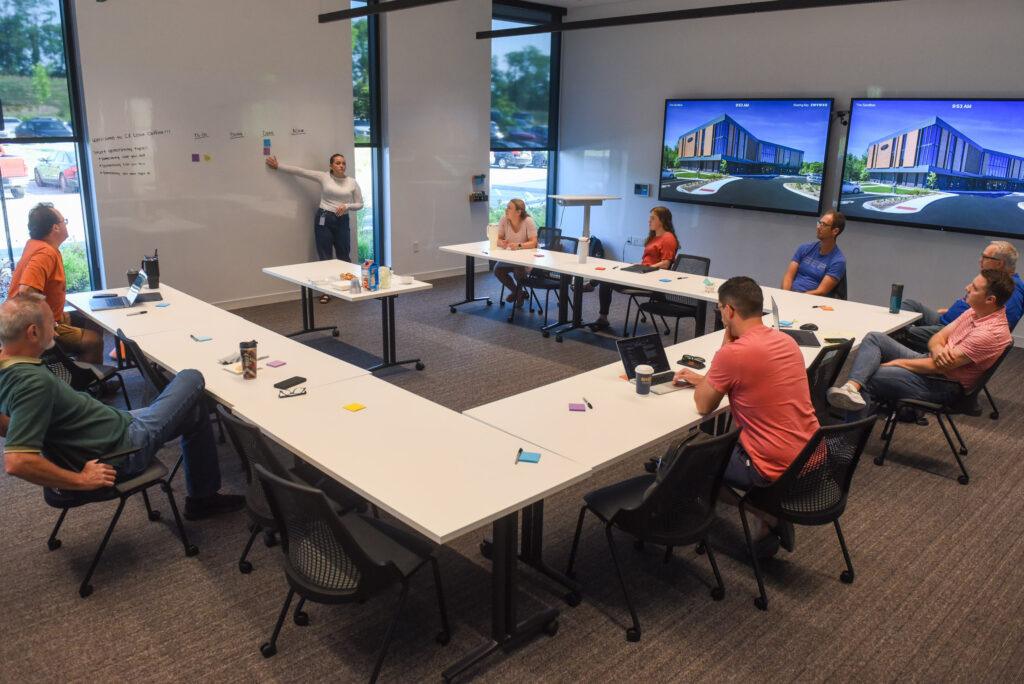
Love ‘em or hate ‘em, there’s no escaping meetings. Thankfully, it doesn’t take much to transform a meeting from a waste of time into a purposeful gathering. Laying the groundwork before, running the meeting efficiently, and knocking out action items after the meeting can make all the difference.
At SEP, we follow a framework called the ART of a Meeting to help us stay focused and make the most of our time together. I learned the core framework from Shelby Ervin during my time in Orr Fellowship, and my team at SEP adapted it to meet our needs. ART stands for arrange, run, and take care of business – the three key phases to run an effective meeting. Read on to learn how to apply this framework.
The ART of an Effective Meeting – Arrange, Run, and Take Care of Business
Arrange – Before the Meeting
Preparation is key to running an effective meeting. If you, the facilitator, don’t know what the group needs to accomplish, no one else will, either.
Some meetings require more preparation than others. As a general rule of thumb, the more people that will be at the meeting, the more you should prepare. The list below walks you through the most important steps to get ready for a meeting, but some may not be applicable for every meeting.
Follow these steps to get your thoughts in order and set your team up for an effective meeting:
- Define the purpose of the meeting
- Decide who needs to be at the meeting
- Create an agenda
- Determine roles for the meeting (e.g., facilitator, notetaker, etc.)
- Create a visual aid – slide deck, handouts, etc.
- Pick the appropriate venue and take care of logistics
- If you’re meeting in-person: reserve a room to meet in and check that there will be enough room for everyone. Make sure the room has the technology you need (e.g., a monitor to screenshare on).
- If you’re meeting virtually: create the virtual meeting and configure the settings (e.g., mute participants on entry, require a passcode, default to video-on, etc.).
- Decide how long the meeting needs to be
- Schedule more time than you think you need. You can always end early!
- If you’re meeting over lunch or for multiple hours, consider providing a meal or snacks.
- Make a list of materials you need (e.g., handouts, hardware, sticky notes, etc.)
- Send a meeting invite with a subject line that makes sense to attendees, an agenda or the purpose of the meeting, and the meeting location.
Run – During the Meeting
All that preparation is worthless if you don’t execute it well.
Follow these steps to facilitate an effective meeting:
- Read the agenda
- Facilitate introductions (if applicable)
- Facilitate the agenda
- Keep an eye on the clock and end on time
- Put distracting ideas in a “parking lot” list to address at another time
- Determine follow-up items and assign them to owners
- Give everyone the opportunity to leave before any “after-meeting meetings”
Take Care of Business – After the Meeting
The meeting is over, but your job as the facilitator is not!
To make the most of the time your team just spent together, take a couple quick steps:
- Send a follow-up message to communicate next steps, action items, and decisions the group made
- Ask a teammate for feedback on the meeting. What did you do well? What can you improve?
Final Thoughts
Running an effective meeting is pretty simple. Just remember it’s an ART:
- Arrange
- Run
- Take Care of Business
If you found this post helpful, check out this article on Lean Coffee meetings, a specific style of meeting we love here at SEP.
See how we tackle our toughest problems together.
Learn more about our collaborative culture at SEP.
You Might Also Like